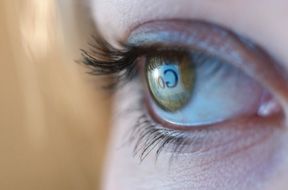
Visually Adapting to the Digital Age
Sometimes, it appears that digital technology has taken over every aspect of our lives. Whether at the workplace or home, it seems impossible to escape the computers, smartphones, and tablets of today. Digital technology won’t be disappearing anytime soon, so eye care specialists are popularizing the 20/20/20 rule: to reduce ocular damage, every 20 minutes of screen time, lift the eyes and focus on an object at least 20 feet away for 20 seconds.
Computer screens are visually straining because figures are comprised of tiny light pixels that fade in brightness towards the outer edge of a character. Due to the difficulty experienced in focusing on those digital characters, the eyes attempt to rest by focusing deeper beyond the screen. The repeated motion of focusing the eyes on characters and then resting the eyes beyond the screen causes exhaustion and pain. Computer Vision Syndrome, or Digital Eye Strain, is now formally acknowledged by the American Optometric Association as a declining state of visual acuity characterized by fatigue, blurriness, headaches, and uncomfortable (dry, burning, or itching) eyes. Now that the appearance of this health issue is increasing, eye care specialists are devising methods to preserve visual acuity.
The 20/20/20 rule, besides having a catchy name, relieves the eyes by providing a moment to rest on a non-pixelated faraway object. Vision specialists anticipate that if the 20/20/20 rule is properly followed, the eyes will not repeat the shift of digital focus as frequently. Since both proper visual acuity and comfort are on the line, there is certainly no harm in taking this simple rule to heart.
Source: Occupational Health & Safety
Have a thought about this article? Contact Us and let us know.